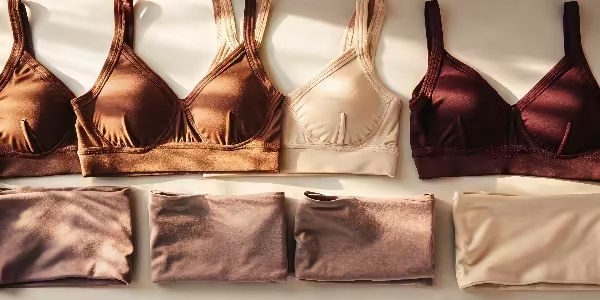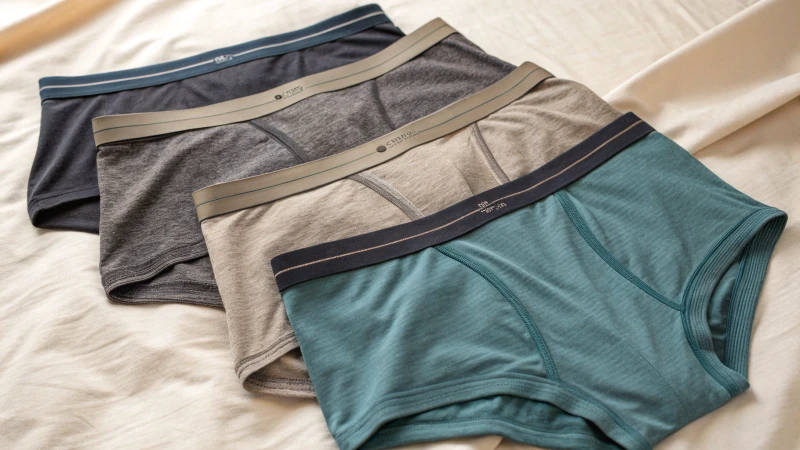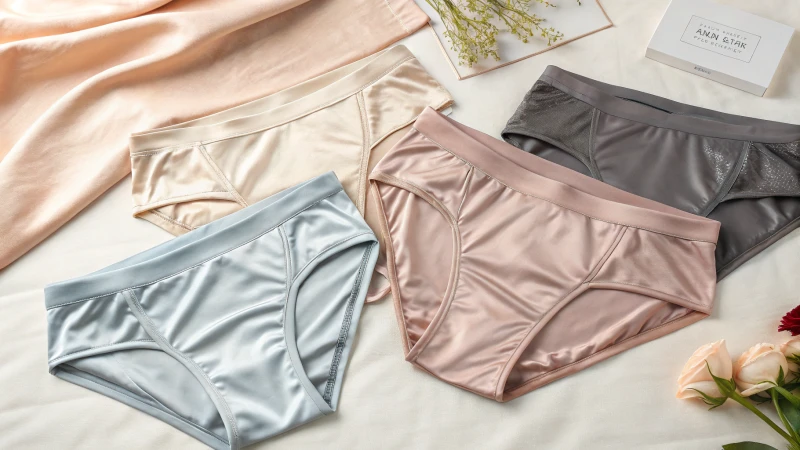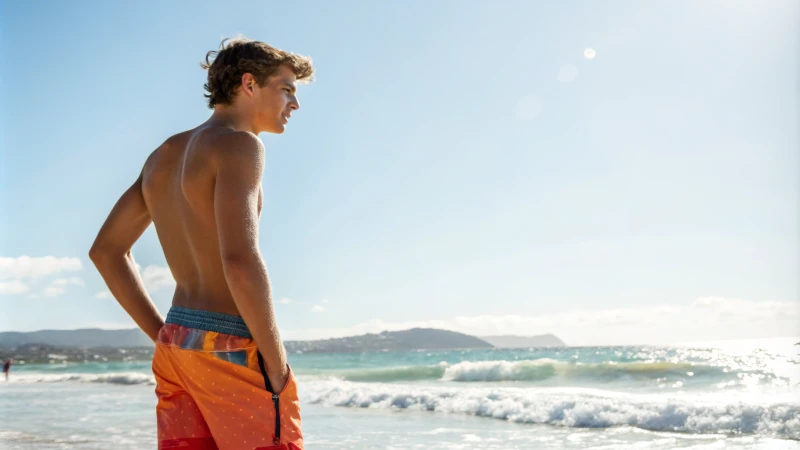
Some men choose to wear underwear under their swim trunks. They have different reasons for this choice. You are not alone if you wonder about this.
Men frequently wear underwear under their swimsuits. This provides additional comfort, support and hygiene. Most swimwear includes built-in linings. However, an extra layer offers a feeling of security. Many find this security very important. The underwear also really absorbs moisture.
I remember the first time I watched my friend wear swim trunks over his boxers. It seemed strange at first. Then, I realized he cared about comfort and support. Many men appreciate that extra layer. It gives a feeling of security and stops chafing. Some people choose this for hygiene. Others prefer it for personal reasons. It's interesting! Simple things create different choices among us.
Men wear underwear for added comfort under swim trunks.True
Many men prefer the extra comfort and support that underwear provides while swimming.
All swimsuits have built-in linings for support.False
Not all swimsuits are designed with built-in linings, leading some men to wear underwear.
What Are the Comfort Considerations for Wearing Underwear with Swim Trunks?
Do you ever think about whether wearing underwear under swim trunks feels comfortable? You are not alone! Let's explore this topic with my experiences. Comfort is important.
Wearing underwear under swim trunks probably increases comfort. It stops chafing. It offers support. It helps manage moisture well. Choosing the right fit really matters. Select good material to avoid any discomfort. Your personal taste matters much in this choice.
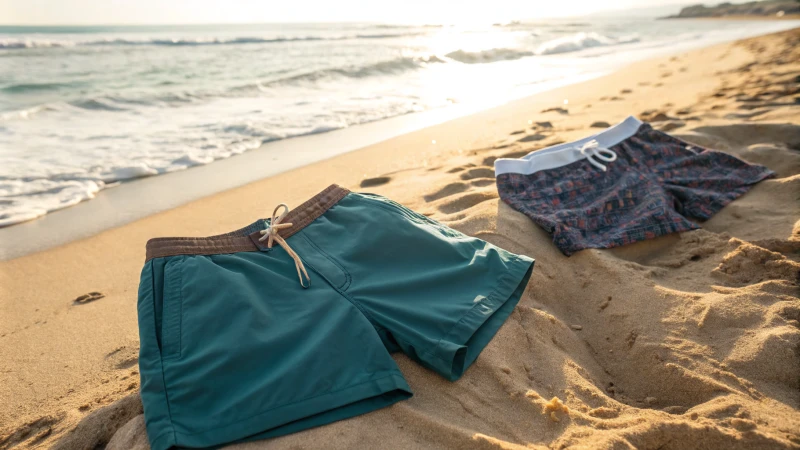
Understanding Comfort with Underwear and Swim Trunks
Wearing underwear under swim trunks is a common practice among men for various reasons, but it is essential to consider both comfort and practicality.
Chafing Prevention
One primary reason men opt to wear underwear with swim trunks is to prevent chafing. The friction between skin and swim trunk fabric can be uncomfortable, especially during active water sports. I skipped underwear once during beach volleyball and regretted it - ouch! Using moisture-wicking underwear really helps here. It reduces friction significantly. Check out effective materials1 that help in reducing friction.
The Role of Support and Coverage
For some, wearing underwear provides a sense of support and coverage. Not all swim trunks are the same, especially for coverage when moving in water. One day, my swim trunks lacked support while kayaking - not my best moment! A supportive pair of boxer briefs2 can enhance comfort and help maintain the desired level of modesty.
Moisture Management
Another consideration is moisture management. Swim trunks typically dry quickly, but wearing underwear can either enhance or diminish this effect.
| Type | Drying Speed | Comfort Level |
|---|---|---|
| Standard Trunks | Fast | Moderate |
| With Underwear | Moderate | High (if moisture-wicking) |
Choosing the right fabric for your underwear can significantly impact your comfort level. Look for options that absorb moisture but also dry quickly.
Psychological Comfort
On a psychological level, some men feel more comfortable wearing underwear under their swim trunks due to personal preferences or cultural norms. It’s important to note that while some may feel secure with extra layers, others may find it restrictive. I needed time to find my comfort zone; confidence is as crucial as physical comfort! Explore psychological aspects of swimwear3 that contribute to overall confidence while swimming.
Practical Considerations
Practicality is also crucial when deciding whether to wear underwear under swim trunks.
- Quick Changes: If you frequently switch between swimming and other activities, having underwear may allow for a seamless transition.
- Laundry Implications: After swimming in saltwater or chlorine, I think about washing each item; consider the washability of your swim trunks and underwear combination.
In summary, weighing the pros and cons of comfort, support, and personal preference will help in making an informed decision on whether to wear underwear with swim trunks.
Wearing underwear prevents chafing during water sports.True
Underwear reduces friction between skin and swim trunks, helping to prevent chafing during active movements in water.
All swim trunks provide adequate support without underwear.False
Not all swim trunks offer sufficient support for different body types, making underwear beneficial for added support.
How Do Hygiene and Support Play a Role in Swimwear Choices?
Have you ever looked at a swimsuit rack and felt confused by too many choices? I have! Hygiene and support are important factors in our decisions. Knowing about them might completely change our swimming experience.
Good hygiene and support are important in swimwear choices. Choose quick-drying fabrics with antimicrobial features for cleanliness. Pick styles with built-in support for comfort while swimming.

The Importance of Hygiene in Swimwear
Hygiene in swimwear is really important. I often think about it when choosing what to wear to the beach. Wearing suits that have been in the ocean or public pools might cause worries. I rely on good materials to stay clean and enjoy my time in the water.
Commonly used fabrics like polyester and nylon are excellent for this purpose because they wick moisture away from the body. However, not all swimsuits are created equal; look for those treated with antimicrobial coatings to further enhance hygiene. These coatings make a big difference. On one beach trip, I didn't check for them and my swimsuit was unpleasant by the day's end.
Additionally, proper care for your swimwear is vital. I wash my suit after each swim to remove chlorine or saltwater residues, which can deteriorate fabric over time. Gentle detergents specifically designed for swimwear help keep my suits bright and stretchy. This care is something I really appreciate after buying a nice piece.
Support Features in Swimwear
Support in swimwear is also crucial. I used to wear any shorts without thinking about fit; it was a mistake. Many swimsuits now have built-in liners that provide support without needing extra underwear, reducing bulk and discomfort.
For extra comfort, different swimwear types offer good support:
| Swimwear Type | Support Features | Ideal For |
|---|---|---|
| Trunks | Built-in mesh liner | Casual swimmers |
| Briefs | Contoured pouch for support | Competitive swimmers |
| Jammers | Compression fit | Serious athletes |
| Board shorts | Stretchable waistband | Surfing and casual wear |
Choosing the right type of swimwear with the appropriate support features can significantly impact comfort and performance in the water. It's about comfort and how it performs based on the activities I'll do, like swimming or relaxing on the beach.
Final Thoughts on Hygiene and Support
Understanding hygiene and support in swimwear choices is essential. This knowledge helps make better purchases. High-quality materials provide both cleanliness and comfort, enhancing my swimming experiences much more enjoyable.
For those who want to maintain their swimsuits well, our guide on swimwear care4 offers very valuable tips. Don’t forget to check it out!
Hygiene is essential when choosing swimwear materials.True
Selecting swimwear with quick-drying and antimicrobial fabrics helps maintain hygiene, crucial for public swimming environments.
All swimsuits provide adequate support without underwear.False
Not all swimsuits offer built-in support; some require additional underwear for comfort and functionality during swimming activities.
Should You Wear Underwear Under Your Swimsuit?
Have you ever stood in front of a mirror with your swimsuit in hand, wondering about wearing underwear underneath? Here are the good and bad points of this common question. You may then feel confident in your choice!
**Think about comfort, preventing chafing and personal preference when choosing to wear underwear under your swimsuit. While underwear offers support and soaks up moisture, it might cause discomfort or feel bulky. Pick what suits your comfort and planned activities best!
The Comfort Factor
Comfort really matters when I dive into the water. I have tried both wearing and not wearing underwear. Each choice has its own feel. Underwear sometimes feels like a snug embrace, absorbing moisture and keeping me drier. This is nice if wet fabric easily bothers my skin. I recall a beach trip where choosing underwear felt like having a safety net during sudden jumps into the waves.
But I learned swimsuits often have their own linings to keep us comfortable and supported. These linings usually work well without extra bulk. So, next time I will maybe skip the underwear and trust in the swimsuit's design for support.
Chafing Concerns
Oh, chafing - the enemy of any swim day! I’ve dealt with it many times during long swims. Underwear sometimes provided a buffer between my skin and swimsuit fabric. On rough or tight swimsuit days, that layer was really a lifesaver.
Here’s an important point꞉ wearing underwear can increase chafing if it dries slowly or causes rubbing. I learned that breathable fabrics help a lot. Now, I always check materials before deciding.
Modesty and Coverage
For many, modesty influences swimwear choices. I understand wanting extra coverage for confidence, especially in public. At a crowded pool party once, I felt more at ease with underwear providing coverage.
However, modern swimwear usually offers enough coverage without anything extra. It’s about feeling good in my own skin, whether in a bikini or one-piece.
The Psychological Aspect
Sometimes it’s also about how we feel mentally. Personally, having an extra layer makes me feel secure. But some days, it just seems like too much fabric. Knowing what provides comfort and confidence is very important for my decision.
In the end, doing what feels right for me while enjoying the water without worry is key.
Practical Considerations
Practical factors are important! For competitive swimming, I usually skip underwear for better performance. But on a fun beach day with friends, wearing underwear adds a bit of comfort and support. This really makes a difference.**

The Comfort Factor
Wearing underwear under swimsuits comes with advantages and disadvantages. Underwear provides extra comfort and can absorb moisture, which may help keep you feeling dry during swimming activities. This is particularly beneficial for those who are sensitive to the feeling of wet fabric against their skin.
However, it’s important to note that swimsuits often come with built-in linings designed for comfort and support. These linings can effectively replace the need for additional underwear, reducing the risk of bulkiness and discomfort caused by extra fabric.
For more insights into comfort in swimwear, explore this article on swimwear comfort5.
Chafing Concerns
Chafing is a common issue when wearing swimsuits, especially during prolonged exposure to water and movement. Some individuals wear underwear to prevent chafing by providing an extra layer between their skin and the swimsuit material. This can be particularly helpful if the swimsuit fabric is coarse or if the fit is tight.
On the flip side, wearing underwear can sometimes exacerbate chafing if the underwear doesn’t dry quickly or if it creates friction against the swimsuit. It’s essential to choose breathable fabrics to mitigate this issue.
To learn more about preventing chafing during swims, check out this guide on avoiding chafing6.
Modesty and Coverage
For some, wearing underwear under a swimsuit is a matter of modesty. It can provide an added layer of coverage that may boost confidence when swimming in public spaces. This is particularly relevant for individuals who might feel self-conscious in a swimsuit alone.
Nevertheless, many modern swimsuits are designed with enough coverage and support that wearing underwear becomes unnecessary. It’s vital to consider personal comfort and confidence when deciding whether or not to wear underwear.
Read more about swimwear choices for modesty in this detailed discussion7.
The Psychological Aspect
Psychological comfort plays a significant role in whether individuals choose to wear underwear under their swimsuits. Some may feel more secure knowing they have an additional layer of clothing, while others might feel constrained by extra fabric.
Understanding your preferences can guide your decision—this choice should ultimately cater to your sense of comfort and confidence while swimming.
For insights into how psychological factors influence clothing choices, see this research on clothing psychology8.
Practical Considerations
When considering whether to wear underwear under your swimsuit, practical aspects such as the type of swimming you plan to do are crucial. For instance, if you're engaging in competitive swimming, traditional swimwear without underwear is often preferred for performance reasons.
However, if you're participating in a leisurely swim at a beach or pool party, wearing underwear may offer additional comfort and support.
To further understand the implications of swimwear choices on performance, check out this analysis on swimwear performance9.
Wearing underwear can enhance comfort during swimming activities.True
Underwear can absorb moisture and provide comfort, especially for those sensitive to wet fabric. However, swimsuits often have built-in linings that may suffice.
Wearing underwear under swimsuits always prevents chafing.False
While underwear may help prevent chafing, it can also worsen it if the fabric doesn't dry quickly or creates friction against the swimsuit material.
What Are the Best Alternatives to Underwear for Comfort in Swimwear?
I swim often. I often wonder if I need traditional underwear under my swimwear. Maybe you wonder the same thing. Let's explore very great alternatives that might change how you feel!
If you want comfort during swimming, try swim briefs, seamless underwear, built-in liners, compression shorts or specialized swim underwear. These choices give better support and dry faster. They help you have fun in the water without any discomfort.

The Comfort Challenge in Swimwear
Wearing traditional underwear under swimwear can often lead to discomfort due to the moisture and movement involved in water activities. This discomfort arises primarily from:
- Chafing: The friction between skin, underwear, and swimwear can be irritating.
- Visibility: Regular underwear lines can be visible under tight swimsuits, detracting from a sleek look.
- Absorption: Traditional fabrics may not dry quickly, leading to sogginess and added weight.
To tackle these issues, many are exploring alternatives that provide comfort without the drawbacks of standard underwear.
Alternative Options for Comfort
Swim Briefs
Swim briefs are designed specifically for water sports, providing support without the added bulk of traditional underwear. They often have:- Quick-drying materials
- Minimal coverage that reduces chafing
- Enhanced support for active movement
Feature Benefits Quick-drying fabric Keeps you comfortable during and after swimming Lightweight design Reduces drag in the water Form-fitting style Provides support without being constrictive Seamless Underwear
Seamless options offer a smooth fit that reduces visible lines. They are made from fabrics that dry quickly and are designed to prevent chafing. They can be worn under swimsuits for an added layer of support without compromising comfort.Built-in Liners
Many modern swimwear designs come with built-in liners that can replace traditional underwear. These liners:- Provide support without additional bulk
- Are often made from quick-drying materials
- Can enhance the overall comfort of swimwear
Explore Built-in Swimwear Options10 to discover innovative designs that prioritize comfort.
Compression Shorts
These are popular among men who want added support during physical activities. Made from stretchy, moisture-wicking materials, they help keep everything in place and prevent chafing.Specialized Swim Underwear
Brands are increasingly offering specialized swim underwear designed to be worn beneath swimwear. These products usually feature:- Hydrophobic Fabrics: To repel water and reduce clinginess.
- Anti-chafe Technology: To minimize irritation during movement.
Check out Innovative Swim Underwear Designs11 for the latest trends.
Choosing the Right Alternative
When selecting an alternative to traditional underwear for swimming, consider:
- Material: Look for quick-drying and breathable fabrics like nylon or polyester blends.
- Fit: Ensure a snug yet comfortable fit to avoid any unnecessary shifting during swimming.
- Purpose: Depending on the activity—casual swimming, competitive sports, or beach lounging—your choice may vary. For instance, swimmers may prefer swim briefs while surfers might opt for compression shorts.
By exploring these options, you can find alternatives that enhance comfort and confidence while enjoying water activities. Learn More About Swim Comfort12.
Swim briefs provide support without the bulk of traditional underwear.True
Swim briefs are specifically designed for water sports, offering support while minimizing chafing and discomfort, making them a better alternative to traditional underwear.
Seamless underwear is not suitable for swimming activities.False
Seamless underwear is made from quick-drying materials and designed to prevent chafing, making it an excellent choice for comfort during swimming activities.
Conclusion
Men wear underwear under swimsuits for comfort, support, and hygiene. It helps prevent chafing but may be unnecessary due to built-in linings in swimwear.
Discover expert insights on choosing the right swimwear for optimal comfort and performance during water activities. ↩
Learn how to manage moisture and avoid discomfort while swimming, enhancing your aquatic experience. ↩
Find out how psychological factors influence comfort levels when wearing swim trunks and underwear. ↩
Learn about the different types of swimwear that offer varying levels of support to enhance your swimming performance. ↩
Explore this link to discover expert opinions on wearing underwear with swimsuits. It provides practical advice for all swimmers. ↩
This link offers tips on swimwear comfort and how to choose the right fit for your needs. ↩
Learn about modesty options in swimwear from this comprehensive guide, ideal for those seeking extra coverage. ↩
This research delves into how psychological factors influence clothing choices, helping you understand your preferences better. ↩
Discover how swimwear choices can impact performance in this insightful analysis tailored for competitive swimmers. ↩
Discover innovative swimwear solutions that enhance your comfort while swimming. ↩
Stay updated on the latest trends in swim comfort technology and design. ↩
Find expert advice on choosing the right swimwear alternatives based on activity type. ↩

